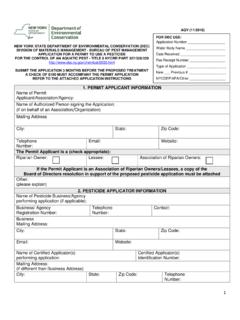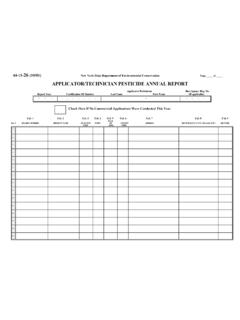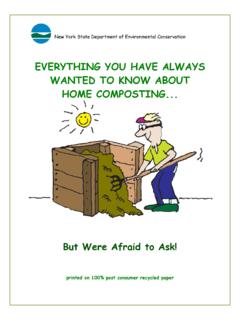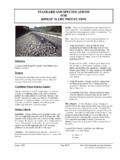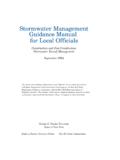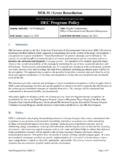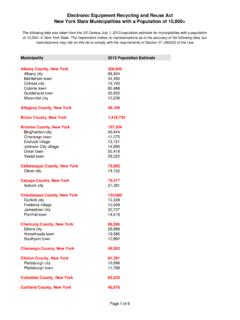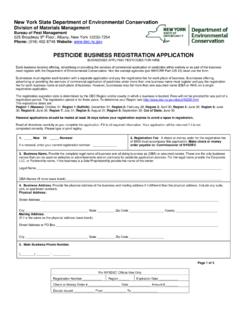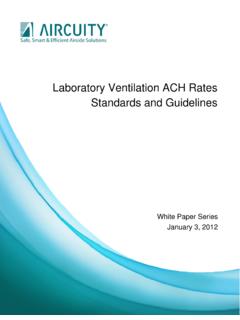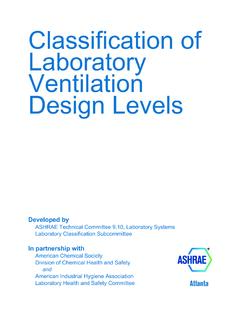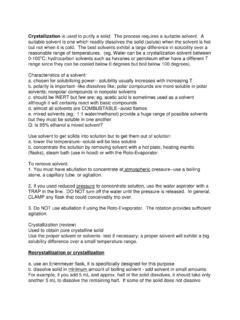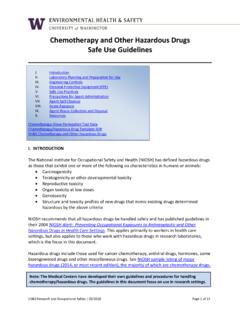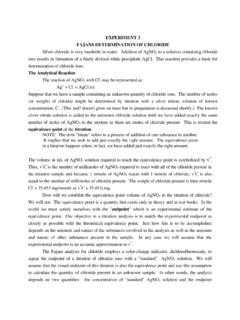Transcription of Chemical Inventory Worksheet Template
1 School Name _____ Date _____ Storage Room No. _____ MSDS1/SDS2,3 Location _____LocationColorStorage Code Page 2 GHS Chemical Hazards Classification5 Page 3 ManufacturerColor Coding4 Chemical Storage* Chemical Storage Per Flinn**Notes or Comments Chemical NameReceipt DateExpiration Date (Per Label)Number of ContainersTotal Amount Container TypeThere are two Chemical storage systems * and ** listed in the table. Only one system should be used as your preference. Chemical Inventory Worksheet Template Phone Number _____Contact Name _____4/7/2016 Chemical Inventory Sheet of Units and Notes in the TableThe units listed are as marked on the container.
2 The quantity should be estimated if it was used: ml = milliliter; gal = gallon; lb = pound; fl oz = fluid ounce; oz = ounce, L = liter; qt = quart; g = gram; kg = kilogramIn the Container Type column, P = Plastic; G = Glass; M = MetalIn the "Color Coding Chemical Storage" column, the colors will be determined by its hazard classification and Safety Data Sheet (SDS) the " Chemical Storage Per Flinn, Storage Code" column, I = Inorganic; O = Organic; Mis = Miscellaneous. Check " Chemical Storage and Handling Recommendations" in a separate document on this website for the the "GHS Chemical Hazards Classification5" column, Roman numbers combine with GHS Classification for Chemical Hazard is used. See the details in page Chemical may require multiple storage color codes and have multiple hazard characteristics.
3 The highest hazardous code and highest toxicity category shouldbe selected in the table. Blue (Health Hazard-Toxic): Chemical is hazardous to health if ingested, inhaled or absorbed through the skin. Store separately in a secure areaRed, Red Stripe (Flammable): Store separately only with other flammable chemicalsGreen (General Storage): Reagent presents no more than a moderate hazard in any categories. General Chemical storageYellow (Oxidizer-Reactive): Reactive/Oxidizer. May react violently with water, air or other chemicals. Store separate from combustible/flammable reagentsWhite, White Stripe (Corrosives): May be harmful to eyes, mucous membranes and skin. Store separate from combustible and flammable chemicalsColor Coding Chemical Storage Summary for Codings, Acronyms, Units and Definitions Used in the Table 4/7/2016 Chemical Inventory Sheet Harmonized System (GHS) Classification Combined with Roman Numbers for Chemical HazardsThis modified chemicals classification is based on Environmental Health & Safety Assistant (EHSA's) online " Chemical Inventory Worksheet instruction"6 and GHS.
4 Roman numbers were used for identifying six different hazardous categories and numerical numbers 1 to 5 follow Roman numbers to indicate the hazardous levels for a Chemical (1 is for most severe and 5 is least severe)I: Fire Hazard - includes products which are flammable, combustible liquid, pyrophoric, and/or an oxidizerII: Pressure Hazard - includes products which are explosive or compressed gasesIII: Reactivity Hazard - include products which are unstable reactives, organic peroxides, and/or water reactive IV: Acute Health Hazards (immediate) - includes products which are highly toxic, corrosive, toxic, irritants, sensitizers, and other hazardous chemicals which cause an adverse effect to a target organ within a short period of timeV: Chronic Heath Hazards (delayed) - includes products which are carcinogens, mutagens, or teratogens, and other hazardous chemicals which cause an adverse effect to a target organ after a long period of timeVI: Environmental Hazards** - is the state of events which has the potential to threaten the surrounding natural environment and adversely affect people's health** This definition is from Wikipedia.
5 GHS classification should be used to be in compliance with OSHA's regulation: June 1, 2015 - Chemical manufacturers and distributors must complete hazard reclassification and produce GHS styled labels and safety data sheets. Distributors get an additional 6 months to complete shipments of old inventory7. All new purchased chemicals will have GHS required labeling and hazard classification. 4/7/2016 Chemical Inventory Sheet refer to the Safety Data Sheet Toxicity/Hazard/PoisonNotes and CommentsDangerous Chemicals Potentially Found In High School Chemical Storage Room Ammonium bifluoride8 ( )Extremely hazardous in case of skin and eye contact, ingestion and inhalationNeed to be disposed by local bomb squad or fire department3 Dedicated, specially-constructed Chemical fume hoods are needed for perchloric acid use.
6 When perchloric acid condenses on hood , duct, and fan components, condensed vapors can react with hood gaskets, greases and other collected materials to form explosive perchloric salts and estersPerchloric acid fume hoods must be used only for perchloric acid applications, and should never be used for other Chemical proceduresOrganic Peroxides8 Highly flammable and explosiveDiethyl Ether10 Severe fire and explosion hazardDispose of within 12 months of receipt, or 6 months of opening, whichever is shorterHydrofluoric Acid10 Call the safety officer immediately in the event of a spillSensitive to heat, shock, fraction or contact with combustible materialsMercury and all of its compounds8 Highly toxic Chemical , toxic effects include damage to the brain, kidneys and lungsNo primary or secondary school in New York state may use or purchase elemental mercury11 Hydrazines8 (N2H4)Very hazardous and extremely reactive and many are carcinogens.
7 Hazardous by definition of OSHA: 29 CFR Peroxides3 (30%)Severely corrosive and cause severe skin burns and eye damage. May cause fire or fumes of bromine and bromides upon thermal decompositionChemicals NameSodium Metal3 Dangerous when exposed to heat or flame; dangerous by reaction with moist air, water or any oxidizer. Spontaneously flammable when heated in air; reacts violently with water, producing very dangerous hydrogen gasSodium metal must always be stored under dry mineral oil to prevent contact with moist airPhosphorus (White, Yellow)8 White or Yellow form is Pyrophoric and a poison. (Red form is not pyrophoric but is very flammable and can react explosively with oxidizing agents)Store under water and an inert gas.
8 Handle under water. Avoid breathing vaporsMust be stored under dry oilExposures greater than 25 sq. in. of body surface area may be fatalPerchloric Acid10 Picric Acid10 Picric acid is a high-powered explosive when allowed to dehydrate, and can form shock sensitive metal picrates when in contact with metalsBromine3, 9 Highly toxic by inhalation and ingestion; severe skin irritant; very strong oxidizer; poison inhalation hazard zone-tear gasNever add water to this product. It may corrode glass. Cyanides8 (CN-)Potentially fatal if inhaled or swallowed. Vapor may cause flash fire. May polymerize. Container may rupture or explodeMay react on contact with air, heat, light or waterPotassium Metal3 Extremely dangerous in contact with moisture and water.
9 It spontaneously ignite when exposed to air or oxygen, can cause severe skin burns. Cutting or handling yellow-coated potassium (old, peroxide coatings) may result in a violent explosionKeep locked up and away from heat, source of ignite, direct sunlight. Keep container dry. Keep away from heat, sparks, open flames, and hot surfaces. No smoking4/7/2016 Chemical Inventory Sheet MSDS: Material Safety Data Sheet2. SDS: Safety Data Sheet3. Flinn's "Scientific Catalog Reference Manual", 2012 and its Safety Data Sheet (SDS) on Line: About Education: GHS: Globally Harmonized System7. MSDS online, GHS 101: Adoption (Hazcom 2012): Princeton University on line MSDS: New York State Environmental Conservation Law Title 21; 27-210712.
10 Department of Justice, Drug Enforcement Administration on Line: Google MSDS/SDS online searchReference:Federal Regulations on Iodine12 Drug Enforcement Administration (DEA); 21 CFR Parts 1309 and 1310 (Rules - 2007)10. Wayne State University, Office of Environmental Health and Safety" website: Texas A & M University, Environmental Health & Safety on Line: ( Chemical Inventory Worksheet )Crystal Iodine is commonly found in the Chemical storage rooms of high schools. Make sure you know that it is federally regulated. This rulemaking establishes regulatory controls that will apply to iodine crystals and iodine Chemical mixtures that contain greater than percent iodine. Persons handling regulated iodine materials are required to register with DEA, are subject to the import/export notification requirements of the Controlled Substances Act (CSA), and are required to maintain records of all regulated transactions involving iodine regardless of Inventory Sheet


